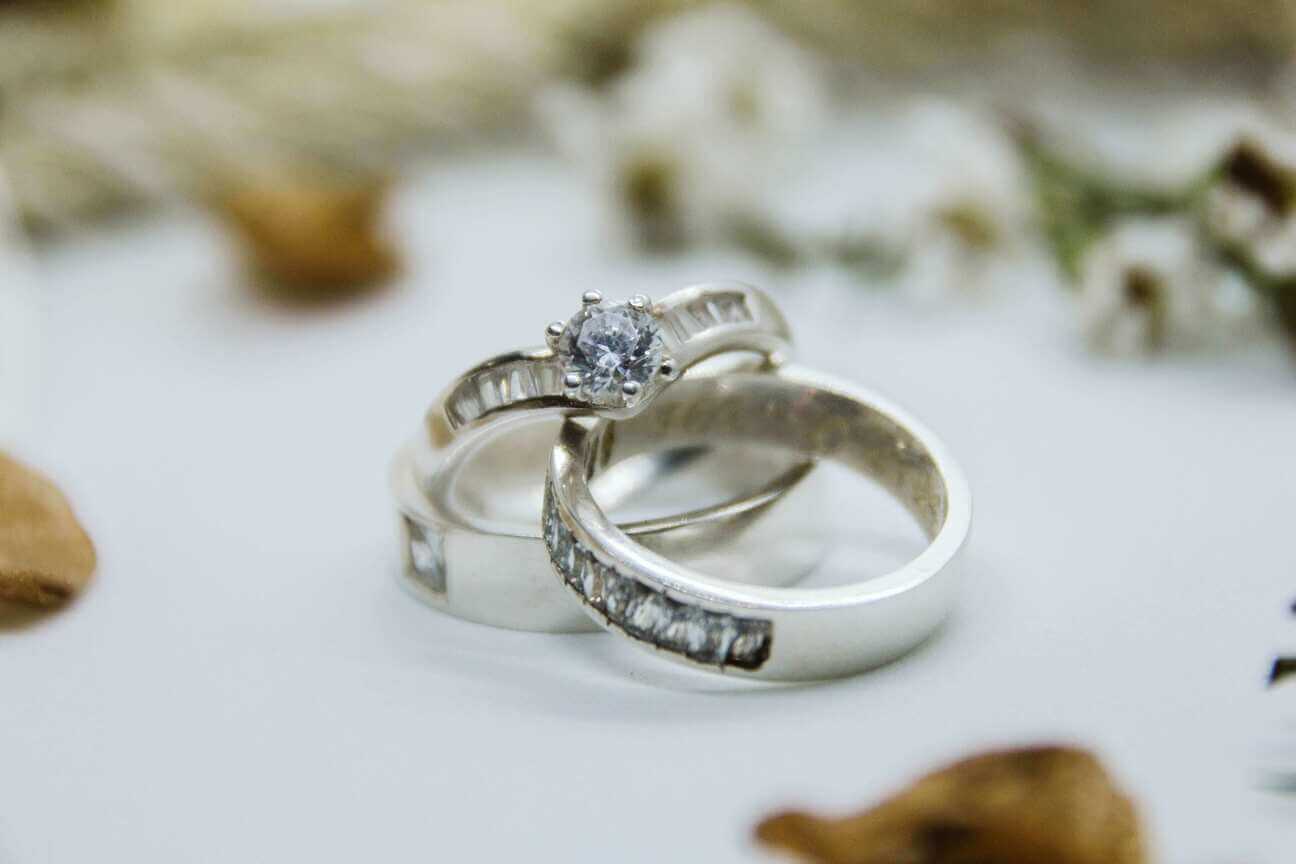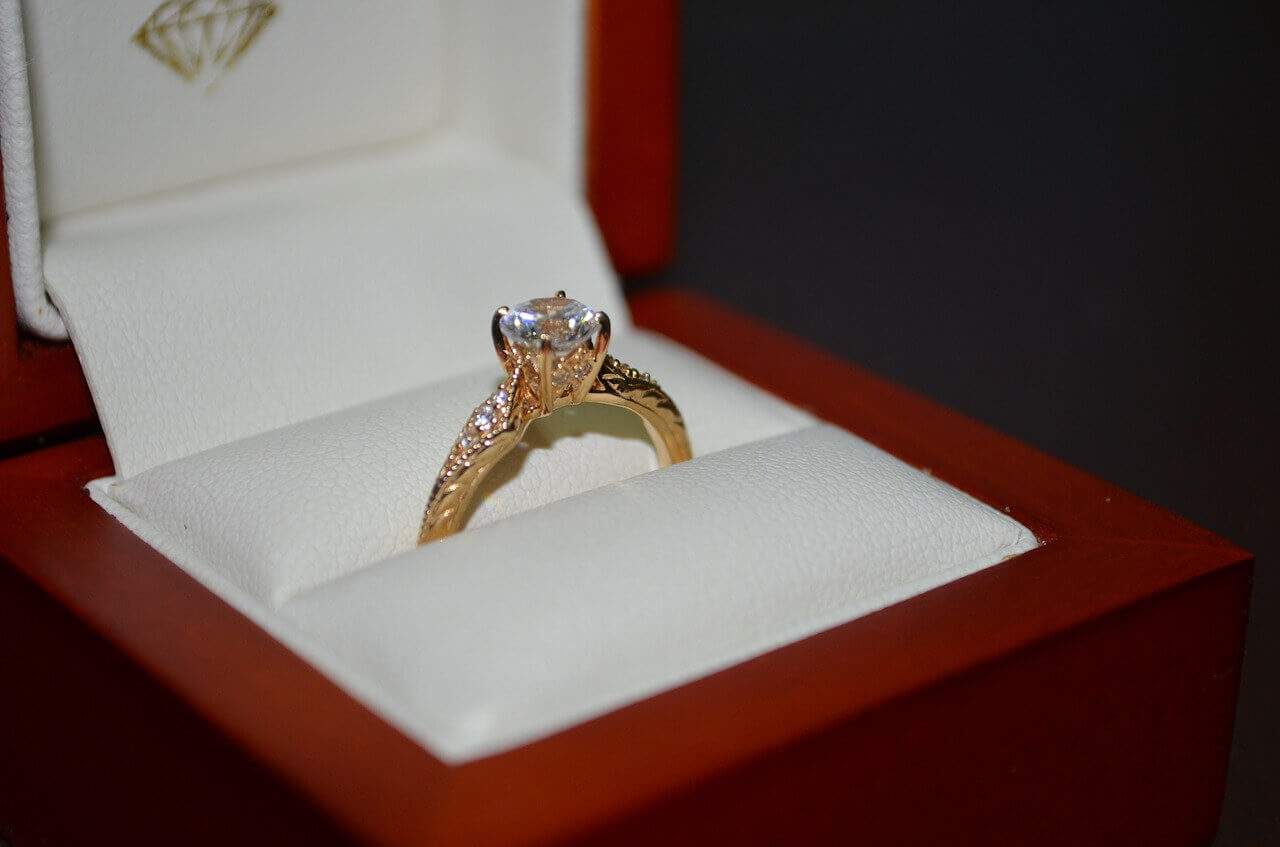May to October is the peak wedding season here in the United States. Foliage is springing up all around, the weather’s just right for an outdoor wedding, and flowers for the perfect bouquet are available in abundance. Among the flurry and excitement, two traditional wedding rings typically sit on a decorative pillow, waiting for the exchange of vows. Today, let’s take a look at how the history of wedding rings and wedding ring stones have changed over time.
A Lifetime of Love
Today, traditional wedding rings are a complete circle — either a simple band of metal (usually gold) or a subtly-bejeweled eternity band. It’s well known today that the circle represents eternity — a marriage that will last for a lifetime. However, the origins of this common belief are less well-known than the design itself.
Ancient Egypt and Alexander the Great
Originally, it was the Egyptian pharaohs who associated rings with eternity. The circle has no beginning or end and has the same shape as the sun and the moon — both objects of worship in ancient Egypt.
When Alexander the Great swept through Egypt in 332 BCE, the Greeks took to the Egyptian custom of giving a ring as a gift to one’s lover and adapted the idea to their own beliefs with designs featuring Cupid and Eros.
Rings Become Part of the Roman Marriage Ceremony
The custom of giving a ring to one’s bride during a marriage ceremony was eventually adopted by the Romans when they conquered Greece in 146 BCE. Traditional wedding rings in Rome were initially made from copper or iron but transitioned to gold by the 2nd century CE.
In the following centuries, wedding ring stones came into vogue with carnelian, onyx, amethyst, and garnet. These gemstones were carved into a design of two hands clasped together — a symbol of partnership and friendship in marriage.
The Ring Finger and the Vena Amoris
The tradition of wearing wedding rings on the fourth finger of the left hand dates back to Ancient Egypt and Rome and has continued to this day in many Western countries. The ancient Egyptians believed that this finger was connected directly to the heart via a “vena amoris” — a vein of love.
Scientists now know that there is no such thing as a vena amoris connected to this or any other finger. However, the notion of a “ring finger” has stuck and this finger is still used as the traditional wedding ring finger today.
One Ring Becomes Two

Prior to the 12th century CE, the meaning of a wedding ring wasn’t entirely clear. In some cultures, the ring that was given represented devotion, in others, betrothal, and in yet others, marriage.
In the twelfth century CE, the Catholic church made marriage into a holy sacrament with an official ceremony before witnesses and a priest. From approximately this time onwards, an engagement ring was given privately to confirm the intention of marriage and the church-sanctioned wedding ring was given during the marriage ceremony itself.
Popular Medieval and Renaissance Designs
When we think about traditional wedding rings today, we visualize a plain or bejeweled band. However, in times past, wedding rings were much larger, less standardized, and more ornate than they are today. Here are some popular designs that were used in the Medieval and Renaissance periods:
Medieval
Gemstone Wedding Rings
Wedding ring stones were very popular in the Medieval period, with rubies used to represent passion, sapphires to represent Heaven, and diamonds used to represent steadfastness and strength.
Stacking Rings
Stacking designs were just as popular in traditional wedding rings as they are today. Stacking rings in the 1600s had either two or three interlocking bands that were set together in the wedding ceremony.
Renaissance
Claddagh Rings
Love a good statement ring? Claddagh rings in the 1600s featured two hands holding a heart — typically a beautifully-faceted gemstone. This motif was also used in three-ring interlocking designs.
Poesy Rings
Romance just got more poetic. Poetry rings in the Renaissance and Elizabethan eras came inscribed with a poem of love that was engraved either on the inside or outside of the ring.
Puritan Thimble Rings
From ornate to humble, Puritan rings in Colonial America were typically made from thimbles rather than gold or jewels. The wives would sew clothes and textiles, then cut the top off the thimble to make a ring.
Twentieth-Century Developments

“Traditional wedding rings” in the twentieth century went through two major changes. The first was the DeBeers diamond marketing campaign and the second was the development of wedding rings for men.
DeBeers Diamond Marketing Campaign
In the Great Depression of the 1930s, jewelry sales suffered as families sought to make ends meet. In 1947, diamond giant DeBeers launched the famous campaign “a diamond is forever” and forever solidified the tradition of diamond engagement rings in the public mind.
Wedding Rings for Men
Traditional wedding rings were worn by women, but this all changed in World War II. Soldiers who had a wife, sweetheart, or fiancé wore a wedding ring to remember their beloved back home. This eventually caught on throughout society and wedding rings for men became standard practice.
Celebrate Your Love with Traditional Wedding Rings from AZEERA
The history of wedding rings and wedding ring stones are fascinating topics to explore — especially if you’re in the process of designing wedding rings for yourself and your fiancé(e). At AZEERA, we offer a wide range of designs that range from antique to modern for women and include gemstone and all-metal options for men. If you fancy a historic-style gimmel or Claddagh ring, we can also make these from scratch for you with our custom ring design process. Schedule a callback with our founders today to begin crafting the perfect rings!








































































